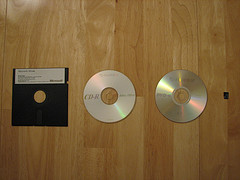I’m not sure that I completely agree with Scott Fulton’s conclusion in this piece, but it’s well worth a read nonetheless. On the difference between Google and journalism:
News has always been a loss leader; it’s the thing publishers provide to make the real products they used to sell timely, interesting and competitive. It’s literally the sugar coating.
The Internet commandeered the services that newspapers once championed and delivered each of these services on an a la carte basis. In an earlier era, it made sense to bundle these services in a single package – the newspaper – and deliver it fully assembled. Today, the Web itself is the package, and each of the services now competes against other similar services in separate, often healthy, markets. And this is as it should be – this is not somehow wrong.
But it leaves local news providers with only the container, abandoning them with the task of making a living from the news alone. What’s worse, it thrusts them into a market with tens of thousands of journalistic ventures of all sizes, all of which have charged themselves with the same objective: building a business model around solely the news. What gives all these services a bit of a reprieve, albeit temporary, are Google News and the other aggregators in its category. Aggregators serve not only as front pages for a multitude of news services, but by bundling them together and giving them the illusion of plurality, aggregators substitute for the missing thunder of the press. The end product is not exactly editorial, but if you squint, there are moments when it reminds you of something that might have been editorial once.
Journalism online has a distribution problem. Unlike a road network, Google isn’t a neutral network through which news can be pushed; unlike hauliers and newsagents, social networks don’t exist primarily to distribute our news but have their own purposes and uses that sometimes conflict with ours. As the Mail Online prepares to turn its first profit, there is a wider argument playing out about whether journalism can or should be valued by how well and widely it is distributed – for display ad driven models this is particularly acute. And Google, as a display ad provider, potentially profits twice by being the primary distributor as well.
For news, Google is a distributor trying to make the product fit its network. (In other areas too – Schema.org microdata, authorship markup and other elements of Google+ spring to mind.) Though it’s certainly useful – I would argue vital to most news sites – it’s not the only way to distribute news, and for some sites it’s not the dominant method. Google is competing with email, social networks or even direct traffic to be the primary access method. Of course, then, it wants access to news and other content in a form that’s easy for it to parse and display. No wonder it fell out with Twitter and Facebook.
To my mind, this is the quote that gets to the heart of it:
Like it or not, aggregation is an interim solution. It’s a kludge that satisfies an immediate need in the short-term; it’s a substitute newspaper.
Google News is the best of what we’ve got now. It’s not necessarily what’s best for news. It’s certainly not where we’re going to end up.
